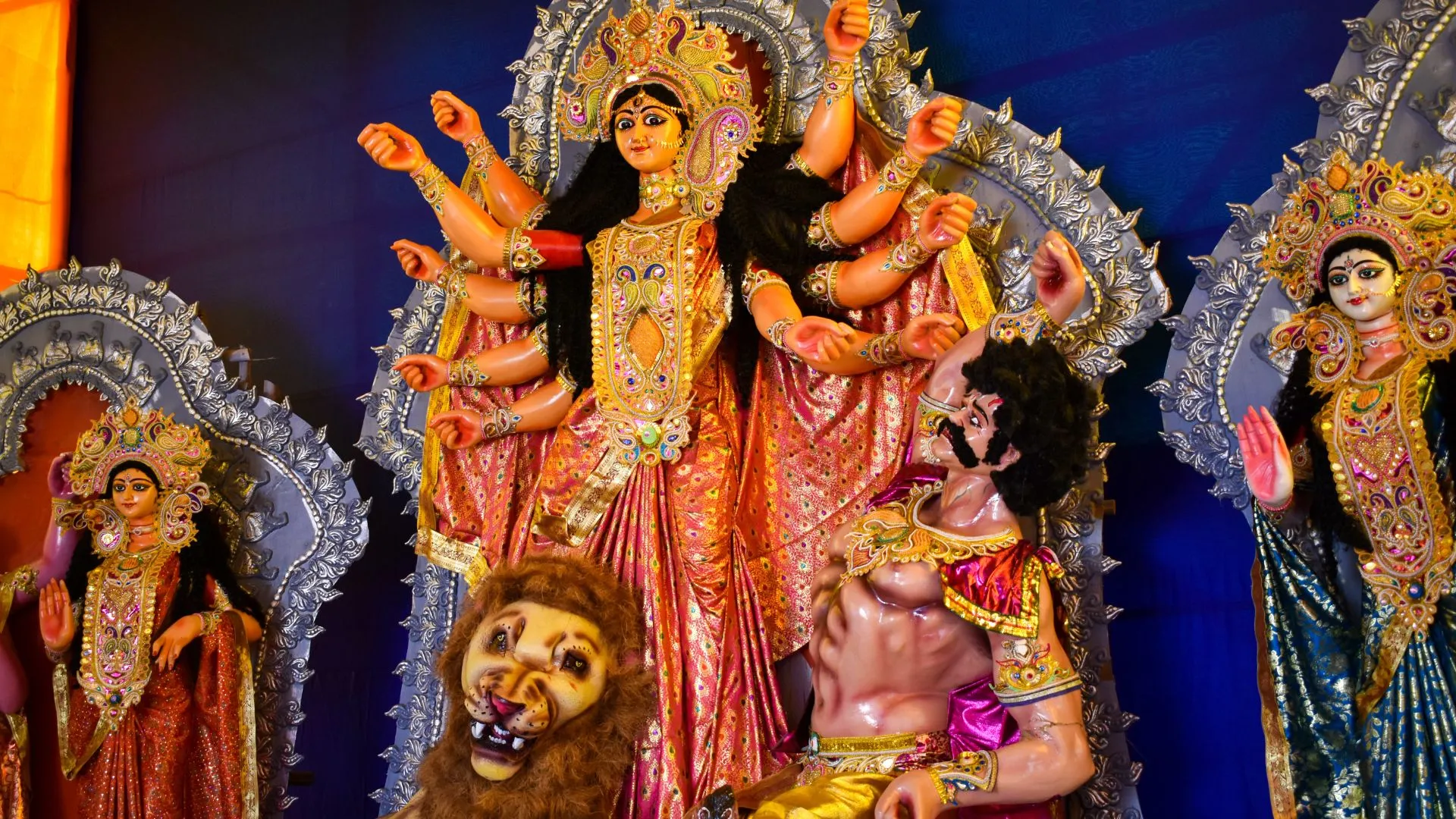What is the Significance of the Third Day of Navratri? Learn about Maa Chandraghanta


Navratri is one of the most celebrated Hindu festivals, dedicated to the worship of the nine forms of Goddess Durga over nine days. Each day honors a different form of the Goddess, and the third day is devoted to Maa Chandraghanta, a powerful and divine manifestation symbolizing courage, peace, and bravery. The third day of Navratri is filled with vibrant rituals and celebrations that resonate deeply with devotees, marking a moment of spiritual reflection and joy.
In this blog, we’ll dive into the significance of the third day of Navratri, the story of Maa Chandraghanta, and how this day is celebrated across India with devotion and festivity.
Maa Chandraghanta, the third avatar of Goddess Durga, is known for her warrior-like appearance, exuding grace and fearlessness. She derives her name from the crescent-shaped moon (Chandra) adorning her forehead, resembling a bell (Ghanta). This crescent symbolizes her connection with time, change, and cycles, while the bell signifies the sound of divine consciousness that removes negative energies and promotes peace.
Maa Chandraghanta is often depicted riding a tiger, symbolizing bravery and power. Her ten hands carry weapons such as a trident, sword, bow, and arrow, signifying her preparedness for battle against evil forces. At the same time, she offers blessings and protection to her devotees. Her radiance is calming, and her third eye remains open, ready to destroy any negativity, reflecting the balance between serenity and strength that she embodies.
Maa Chandraghanta's story goes back to the time of her marriage to Lord Shiva. In her previous avatar as Maa Parvati, she underwent intense penance to win Lord Shiva's heart. However, during their wedding, Lord Shiva arrived in an intimidating form, adorned with ash, snakes, and skulls, much to the alarm of Parvati’s family.
To ease the tension and bring balance to the occasion, Parvati transformed into the beautiful and serene form of Chandraghanta, radiating warmth and grace. Her calming presence not only soothed the worried hearts of her family but also softened Lord Shiva’s appearance. This act signifies the balance between fearlessness and compassion, teaching that even the most formidable situations can be met with peace and love.
The third day of Navratri holds special significance for devotees seeking both internal and external peace. Worshipping Maa Chandraghanta is believed to invoke her blessings of courage, fearlessness, and tranquility. Devotees pray for the removal of obstacles and for protection from negative energies. She is also seen as a harbinger of prosperity, joy, and harmony in relationships.
Her crescent-shaped moon symbolizes emotional balance, encouraging her devotees to stay calm and composed in challenging situations. On this day, many believe that by offering sincere prayers to Maa Chandraghanta, one can attain mental peace, clarity, and spiritual strength.
The third day of Navratri is marked by various religious and cultural celebrations that vary from region to region but share the common theme of devotion and joy.
1. Morning Prayers: Devotees wake up early to offer their prayers to Maa Chandraghanta. The puja typically involves offerings of milk, sweets, and fruits, symbolizing purity and nourishment. Some also offer yellow flowers, which are considered her favorite.
2. Fasting: Fasting is an integral part of Navratri celebrations, and devotees often observe a day-long fast to honor Maa Chandraghanta. It is believed that fasting on this day can help cleanse the body and soul, preparing one for spiritual growth.
3. Kanya Puja: On the third day, young girls are often worshipped as they are seen as the embodiment of the Goddess herself. Devotees feed these girls and offer gifts as a form of respect and blessing.
4. Dandiya and Garba: In the evening, the spiritual mood shifts to a more festive tone with Garba and Dandiya performances. The lively folk dances, accompanied by traditional music, are symbolic of the joy and victory of good over evil.
5. Decorations and Processions: Temples and homes are adorned with colorful decorations, flowers, and lights. In some places, processions are held, with beautifully decorated idols of the Goddess being carried through the streets amidst the chanting of devotional hymns.
While traditional rituals continue to be an essential part of Navratri, many people have started incorporating modern elements into their celebrations. From gifting to eco-friendly practices, Navratri is becoming more dynamic and inclusive. For instance, gift boxes, like the Ashta Lakshmi Gift Box, add a modern twist to traditional celebrations. These elegantly crafted boxes not only honor the spiritual aspects of the festival but also offer a thoughtful way to connect with loved ones, spreading joy and blessings.
The third day of Navratri, dedicated to Maa Chandraghanta, is a day of balance, courage, and inner peace. Her presence in the Navratri celebrations reminds us that while strength is essential, compassion and serenity are equally important. The rituals, prayers, and celebrations of this day create a vibrant atmosphere of devotion, unity, and joy, bringing families and communities together.
As we continue to honor these age-old traditions, adding personal touches like thoughtful gifts for loved ones can make the celebrations even more special. Whether through a meaningful gift box like the Ashta Lakshmi Gift Box, or through simple acts of kindness and prayer, Navratri is a time to reflect on our inner strength and share happiness with those around us.
The festival invites us to embrace the qualities of Maa Chandraghanta—grace, peace, and power—and carry them forward, not only during these nine days but throughout our lives.